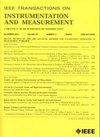Super-Resolution Reconstruction of Infrared Images With Edge-Enhanced and Variable Activation Network
IF 5.9
2区 工程技术
Q1 ENGINEERING, ELECTRICAL & ELECTRONIC
IEEE Transactions on Instrumentation and Measurement
Pub Date : 2025-06-18
DOI:10.1109/TIM.2025.3580862
引用次数: 0
Abstract
Infrared images have less available information compared to visible images, and the applying of high-frequency details and edge information can directly influence the quality of super-resolution (SR) reconstruction of infrared images. However, most existing SR methods have a single activation mode for high-frequency features and over-dependently increase the network depth to improve performance. To address these problems, we design a variable GELU (VGELU), which introduces a learnable parameter a based on GELU to suppress low-frequency features and noise by adaptively changing the slope of GELU in high-frequency feature extraction. In addition, we propose an attention-enhanced CATS-RCF (ACR) network in the strong edge feature extraction module (SEFEM), which introduces coordinate attention based on CATS-RCF (CR) to enhance the edge weights of infrared low-resolution (LR) images and improve the effect of edge extraction. To fully fuse high-frequency features and edge information, we further design an edge feature fusion block (EFFB), which effectively fuses edge information from different dimensions. Our edge-enhanced and variable activation network (EVAN) is constructed by applying the proposed VGELU, SEFEM with EFFB. The comprehensive experiments demonstrate the superiority of our EVAN over other comparison methods.基于边缘增强和可变激活网络的红外图像超分辨率重建
红外图像的可用信息比可见光图像少,高频细节信息和边缘信息的应用直接影响红外图像超分辨率重建的质量。然而,大多数现有的SR方法对高频特征采用单一激活模式,并且过度依赖于增加网络深度来提高性能。为了解决这些问题,我们设计了一个变量GELU (VGELU),它在GELU的基础上引入了一个可学习的参数a,通过自适应改变GELU在高频特征提取中的斜率来抑制低频特征和噪声。此外,在强边缘特征提取模块(SEFEM)中提出了一种注意力增强的CATS-RCF (ACR)网络,该网络引入了基于CATS-RCF (CR)的坐标注意力,增强了红外低分辨率(LR)图像的边缘权重,提高了边缘提取的效果。为了充分融合高频特征和边缘信息,我们进一步设计了边缘特征融合块(EFFB),有效地融合了不同维度的边缘信息。利用所提出的VGELU、SEFEM和EFFB构造了边缘增强和可变激活网络(EVAN)。综合实验证明了我们的EVAN比其他比较方法的优越性。
本文章由计算机程序翻译,如有差异,请以英文原文为准。
求助全文
约1分钟内获得全文
求助全文
来源期刊

IEEE Transactions on Instrumentation and Measurement
工程技术-工程:电子与电气
CiteScore
9.00
自引率
23.20%
发文量
1294
审稿时长
3.9 months
期刊介绍:
Papers are sought that address innovative solutions to the development and use of electrical and electronic instruments and equipment to measure, monitor and/or record physical phenomena for the purpose of advancing measurement science, methods, functionality and applications. The scope of these papers may encompass: (1) theory, methodology, and practice of measurement; (2) design, development and evaluation of instrumentation and measurement systems and components used in generating, acquiring, conditioning and processing signals; (3) analysis, representation, display, and preservation of the information obtained from a set of measurements; and (4) scientific and technical support to establishment and maintenance of technical standards in the field of Instrumentation and Measurement.
 求助内容:
求助内容: 应助结果提醒方式:
应助结果提醒方式:


